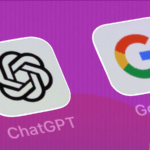By Carlos Meza, Crowd Content
Where is the line between a good blog and truly great content?
Digital marketers have long focused on keywords, meta data and other SEO elements needed to rank well in search engines. But the search landscape is shifting.
While those tried-and-true SEO elements are still important, the pages making it to the top of search results are the ones Google feels are most useful and insightful for readers.
So, what does this mean for growth-minded brands intent on scaling?
With Google prioritizing helpful content, it’s time to adjust the focus from writing for algorithms to crafting the best content you can for curious, human readers. If you can deliver information your readers want to consume — while showcasing your expertise — your company is more likely to rank higher in search results.
Here are some best practices for creating high-performing, people-first content that delivers exceptional value to readers and in turn, can help your business rise to the top of SERPs.
1. Get to Know Your Audience
Before you can customize content for your audience, you need to know who’s on the other side of the screen. Hello, data!
Using market research, website analytics and feedback from sales and customer service reps, gather as much information as you can about your customers.
- What do they like to do?
- Where do they like to shop?
- What do they do when they get online?
- Are they accessing content via a laptop or mobile devices?
- What problems are they trying to solve?
People-first content is not about your brand but giving audiences the right information at the right time. Knowing what your target consumers need will help you better serve them. And that’s what content creation truly is: a service-based enterprise (even if you’re ultimately trying to sell a product).
Remember, though, that those data points you’re gathering aren’t the big picture, they’re just the pixels.
Ultimately your audience isn’t a collection of hobbies and habits; they’re inquisitive individuals who want to acquire knowledge, improve their lives and be entertained. Your content should be satisfying and rewarding. It’s the difference between baking a German chocolate cake and expecting everyone to eat it or asking around to see what desserts people prefer and baking something accordingly.
2. Become Your Audience’s Go-To Problem Solver
Your customers have a reason for clicking on your page from search engine results and if you’ve done your keyword research, you should know the intent behind their query. They may want to learn about a topic, research brands or find the best price before whipping out a credit card. Your content will better resonate if you know why your audience is turning to Google in the first place.
You can determine search intent for a keyword by assessing the top-ranking pages for the query. You’ll get a sense of the type of content that Google feels best answers the search intent.
Make note of the topics covered and the format type and use it to inform your content creation. If a search returns how-to guides about installing artificial turf, then your audience wants to know the steps to complete a task. Creating a page about the benefits of artificial turf, even if well-written, isn’t going to match that term’s search intent and solve their problem, so the odds of a page-one ranking are slim.
3. Dive Deep
Google began emphasizing the importance of relevant content with its Panda update in 2011. Recent updates take this further, cutting through mediocre content to highlight results that offer real value.
Head’s up, bargain shoppers: Pages created just to incorporate keywords and that barely skim the surface of a topic typically leave users dissatisfied. As a result, they’re falling lower than ever on search pages, leaving more substantial entries to take the top spots.
To create high-ranking, people-first content:
- Avoid reiterating the same information as other sites and instead get to the meat of a topic. What will inspire someone to stop skimming and start sharing?
- Look for gaps in existing content and cover them in your content.
- Anticipate your reader’s questions and explore the topic thoroughly or with fresh perspectives.
Do all that and your page will deliver a one-two punch of reader value and impressive ranking capability.
4. Use a Pillar Strategy
Content pillars are an effective way to show topical authority. Think of this encyclopedic page like the center of a giant wheel. Over time, you’ll add content to the central pillar or hub, exploring different aspects of the theme in greater detail. These detailed pages are like spokes on the wheel, adding strength and substance.
Best of all, each new spoke strengthens your online presence for the subject matter and your authority will grow in tandem.
A few things to remember:
- Pillar and cluster structures don’t have to be built all at once. Start with the pillar and then add spokes over time, using cluster ideas to inspire your overall content strategy.
- Use internal linking to refer readers to additional resources. These links are Google friendly, too.
- Design clusters to give your audience everything they need to know about the topic and they won’t feel the need to return to Google to locate further information.
5. Create a Great User Experience
In the hospitality world, chefs say you eat with your eyes first. It’s not so different from content creation.
When you’re trying to grow your audience, every serving of content you deliver should be aesthetically appealing and easy to digest. This keeps readers on the page and gives them a better perception of your brand.
Here are some tips on making your content effortless to consume:
- Write in a conversational tone and use compelling language.
- Present ideas clearly and concisely so readers can zero in on the information they’re seeking.
- Use H2s and H3s to organize information logically and increase scannability.
- Place data into a table or infographic for an at-a-glance summary.
- Supplement a how-to guide with a video tutorial for all those visual learners.
- Optimize pages for mobile devices.
- Use an appealing design and avoid cluttering the page with ads.
6. Showcase Your Expertise
The best way to connect with your readers is to draw on your knowledge of your industry and deliver information they can’t find elsewhere.
Work on building credibility and providing the most useful content for specific keywords. Try adding value with real-life case studies or insight from your business — this is the color that gives ordinary content life and longevity. Perhaps you can conduct a survey of your customers and share the results. Readers also appreciate downloadable templates and checklists they can apply to their own situation.
Above all, remember that the more expertise you offer, the better positioned you are to inspire loyalty and stand out from competitors. This can translate into mailing list subscriptions, social platform follows, conversions — all those things your brand needs in order to grow.
Search ranking factors and algorithms will continue to evolve over time. However, when you focus your expertise on helping your readers, your brand’s goals align perfectly with Google’s. If you focus on value, authenticity and authority, growth is excitingly inevitable.
About the Author
Carlos Meza serves as President & CEO of Crowd Content, a leading content creation service provider connecting talented writers and editors with businesses in need of high-quality, people-first, publish-ready content at scale in a tech-driven platform experience. A master of scale himself, Meza has been leading high-growth technology companies over the last five years. Prior to being appointed as CEO of Crowd Content in 2021, he served as CEO of Kivuto Solutions, a SaaS Edtech company. An industry veteran, Meza brings a background in engineering and corporate finance to expand the Crowd Content footprint of global brands served. During the early part of his career, Meza spent 13 years working with multinational brands and banks that included Citibank and HSBC. He holds a bachelor’s degree from the Universidad Industrial de Santander and an MBA from the University of Calgary. Connect with Meza on LinkedIn.








